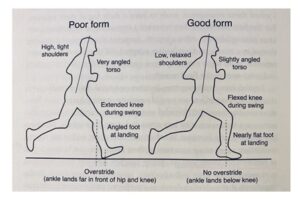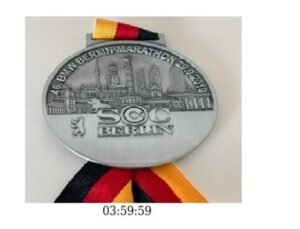
Running is one of the best forms of cardio exercises. It is accessible to most of us at low investment (pair of shoes and running clothes) and one where we can progress at our own pace. It doesn’t require us to adhere to timings of the gym or pool or wait for the right weather. One can just get into their running gear, start with as little as 15-20 minutes of routine and enjoy physical and mental health benefits related to running. In this article I will cover some of the basics of running benefits, what stops people from taking running as a sport and some suggestions to overcome these blockers, things we can do to avoid injuries and a how can someone start from scratch and get to their first 5k run.
Why run in the first place (Importance of cardio)?
Running (or any form of cardio-vascular exercise) helps improve overall heart health, sleep patterns, weight management, productivity at work/personal life, mood and creativity. The benefits have been demonstrated by multiple scientific studies. With regular cardio our bodies become more efficient at utilizing oxygen, our heart learns to adapt as we become more consistent, our brain releases endorphins natural chemicals that reduce pain perception and trigger positive feelings and our body taps into stored fat as a source for energy.
In my experience these benefits are accessible to us if we are consistent with our cardio routine (atleast 3-4 days per week) and we are doing our routines in the “zone of slight discomfort”. For me this means a heart rate of 140-160 (if you have a heart rate monitor) or when I would feel out of breath while speaking with a fellow runner. As a beginner you should be careful not to over-stretch yourself as the body and heart will need time to adapt to the cardio. Start slow, let the body learn and build in incremental steps. This is an important balance one needs to strike. On the one hand, you need to get out of the comfort zone which means it shouldn’t be a walk in the park (for a moderately healthy individual) but at the same time you need to ensure you don’t overstretch. Best way is to monitor your heart rate and keep it below 160. Slow down if it is going any higher. The other way is to measure the running speed at which you feel very comfortable. Increase speed in increments of 5 sec/km to identify at what point you start getting out of your comfort zone. This is the sweet spot of running speed at which you should train. Please keep in mind this rule applies for shorter distances. As you start running longer the strategy should be different where you start at over sometime even below average speed to ensure you have enough energy to end the session well.
Why most people don’t run regularly?
My definition of regular is running 3-4 times a week even if there is no upcoming running event. I think there are 3 main reasons which deter people from taking up regular running.
- Accepting discomfort: As humans we seek comfort and our mind’s first instinctive reaction towards anything which makes us uncomfortable is “Resistance”. As a beginner, going out for a run from the comfort of your house/office will fall into this bucket. The mind will give you multiple other tasks which you need to urgently to avoid the discomfort of going out for that run. The trick to overcome this “mental resistance” is to stop listening to that voice in your head. Schedule the run in your calendar like any other meeting and then similar to a meeting you go for the run, no matter you feel like it or not. Over time you will build the “Resilience Muscle” and slowly the impact of the voice of mental resistance will become lesser and lesser. Those voices are still there but the more you build the resilience muscle, the easier it will be for you to neglect those voices. This is an entire topic in itself. More on it soon.
- Goal oriented mindset: As humans we love to chase goals. With running as well we are motivated as long as there is an upcoming event and we are training for the same. Training for an event as a motivation is fine but the real challenge comes once you have finished the event. How does one keep the habit on-going? One solution is to keep signing up for running events, but not everyone has the means and the time to participate in events across the country or world. The better option, in my opinion, is to make running an integral part of your life. Move from a goal oriented mindset to a systems oriented mindset. This could be true for cycling/swimming or whatever sport you want to play regularly. Just that running is the easiest to organize. Few steps which can help move towards a systems oriented mindset:
- Internalize the importance of regular cardio for the overall health and well-being
- Schedule time on your calendar. You can label those slots “For my Long Term health” to make you internalize the importance of those slots
- Don’t look for longer slots every time because during a working week that can become a hurdle. Instead on weekdays, try slotting short 30-45 minute routine with the longer duration run on the weekend
- Running is Boring: Often times people find running to be boring. And I agree it can be boring in parts since it quite a lonely sport. But the problem happens when we connect boring with meaningless or something without purpose. Then we start asking ourselves why am I doing this activity and it doesn’t feel the right use of our time. The short term gratification mindset which wants you out of any discomfort/misery catches on that thought and starts convincing you why running is not such a great idea. This slowly percolates into your sub-conscious, “Running is not for me. It is a boring sport”. And you start believing this narrative. In cases where we can go to alternate sports and be regular the decision might make sense. But if you are not engaging in another sport then my advice would be getting out of the mindset that running isn’t for me. If you are moderately healthy, you can run a considerable distance (much more than you think) if you are willing to accept the boring. Because beyond the mountain of boring and initial discomfort/pain resides the sense of flow and joy which any of us can reach. Here is my usual experience on a run. I start with discomfort (70-80% of the time), willing myself on, sometimes a part of me cursing and even thinking of excuses as to why this run was not a good idea. This stage usually takes 10-15 minutes to go through once the body has warmed up and this is when I start feeling bit better. Once I get over the physical discomfort, there is a rush of top ideas/questions/challenges which come into my head. As I start thinking about these, my focus shifts from the body discomfort towards things I want to think deeply about and find solutions. And this is where the fun of running begins where you start cutting through the noise and think things through. In most cases I will come back from a run with a better understanding of the aspect of my life I was thinking about. Running becomes a physical exercise for your body and mental exercise for your brain.
Avoiding Injuries
Most common running injuries include runner’s knee (dull pain around the front of the knee), IT band syndrome (pain on the outside of the knee), plantar fasciitis (pain at or near the bottom of the heel), shin splints (pain at the front or inner-facing portion of your lower legs) and achilles tendinitis (pain in the lower leg just above the heel). Majority of these running injuries are related to overuse/over-training, not having the right running form or right shoes. Here are a few steps you can take to avoid running injuries:
- Progressive load: Do not increase more than 10% mileage week over week. There are too many instances where someone would run a 2-3k get excited and go for a 7-8k the next day which has a high chance of leading to an injury. Go for small incremental steps.
- Ensure enough recovery time: No need to run daily. Instead it is better to mix running with strength and other forms of cardio to ensure different muscles are being used and getting strengthened. Running can continue to be the main activity but every other activity supports you to be a better runner.
- Stretch before and after the run: One of the most important things do to in order to avoid injuries. Spend 5 minutes before and after the run. Even if it means you run 2 km less.
- Invest in quality running shoes: Shoes should fit you well and specifically designed for running movements
From 0 to 5k: If you are a complete beginner, the first step is to walk 500m to 1km. Stop if you want, not more than few seconds, before starting again. Progressively move towards a 2-3km brisk walk. Once you are comfortable with these brisk walks, you can confidently move towards running. You can ofcourse decide to skip this step and straight away get to running mode but the above approach ensures minimal risk of injuries in case you are a complete beginner.
As you start running, follow a run-walk-run approach starting with shorter runs and longer time walking and progressively increasing the running distance vs. walking. You can use the below as a guide but above all listen to your body and pace yourself accordingly.

Encouraging kids to do regular cardio: There is great benefit in building the right habits in our children from a young age. We should encourage kids to do atleast 60 minutes of outdoors every day. It can be any sport they like. If you as a parent can get involved, even better. Running can be one such sport which you can do along with your child. Having a goal of together doing a 5km with your kid could be an exciting project!




